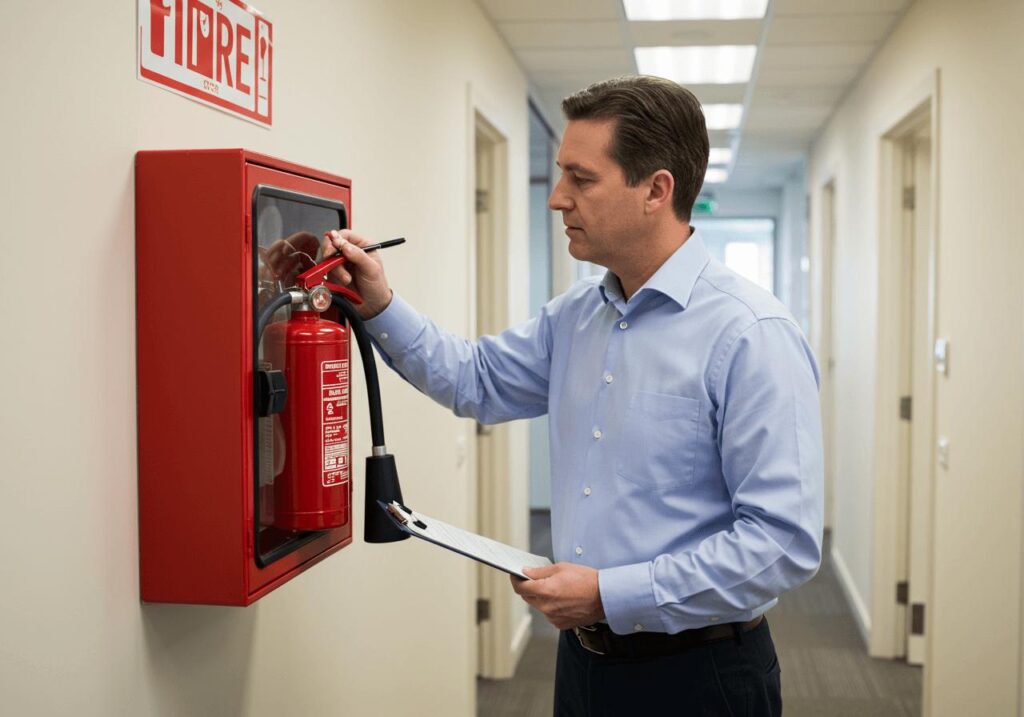Conducting a complete fire risk assessment requires systematic evaluation of potential fire hazards, vulnerable populations, and effective fire safety measures to keep people safe and protect property. These assessments, often referred to as an FRA, serve as the foundation for developing targeted fire safety protocols that can significantly reduce the risk of fire incidents.
TL;DR: A systematic fire risk assessment identifies hazards, evaluates risks, and helps put in place appropriate fire safety measures to protect occupants and property on any premise. Regular reviews ensure continuous improvement and compliance with fire safety legislation.
Key Takeaways
- Fire risk assessments are a legal requirement for almost all non-domestic premises in the UK under the Regulatory Reform (Fire Safety) Order 2005.
- The assessment process includes hazard identification, risk evaluation, and implementation of safety measures.
- Vulnerable populations require special consideration in evacuation planning to ensure the safety of everyone.
- Digital documentation is common, with 78% of businesses using specialised assessment software.
- Regular reviews and updates are essential to maintain compliance and improve fire safety measures, especially after a significant change.
Understanding Fire Risk Assessment Fundamentals
A fire risk assessment (FRA) is a full evaluation of a building’s fire safety measures, equipment, and potential fire risks. It’s a legal requirement for most non-domestic premises and the common areas of blocks of flats and houses in multiple occupation (HMOs) in the UK. The goal is to ensure occupant safety and minimise incidents by identifying and mitigating fire risks.
The importance of a fire safety risk assessment can’t be overstated. They help identify fire hazards before they cause harm, ensure compliance with fire safety legislation (like the Order 2005), and can save lives. Many businesses now use software for documentation and updates. The responsible person has an obligation to see this is done.

Conducting the Initial Site Inspection
The site inspection, part of the fire risk assessment process, covers building structure, occupancy, existing fire safety systems (like fire doors), and ignition sources. This initial fire risk assessment visit is important.
Documentation needed:
- Floor plans.
- Electrical diagrams.
- Previous fire risk assessment reports.
- Maintenance records for fire safety systems.
Building age is significant because older structures often have more electrical fire hazards.
Identifying and Mapping Fire Hazards
Effective hazard identification requires a methodical approach to assess the fire risks. Common fire hazards include electrical equipment, flammable materials, heating systems. Combine visual inspection, equipment testing, and review of historical incidents.
Document with a detailed hazard inventory and mapping of risk areas. Consider external walls especially in blocks of flats. Pay attention to:
- Electrical panels.
- Flammable material storage.
- Kitchens.
- Heat-generating machinery.
- Smoking areas.
This step by step approach ensures all potential fire hazards are considered.
Evaluating People at Risk and Occupancy Factors
A thorough FRA must evaluate who might be endangered – the risk to people. Vulnerable populations (elderly, disabled, visitors) need special consideration. Document maximum capacity, visitor numbers, and staff distribution. This helps assess the risk to people.
Evacuation challenges increase with certain occupancy patterns. This data should inform your risk categorisation. Identify individuals at risk:
- People sleeping (e.g., in houses in multiple occupation or HMOs).
- Those with mobility impairments.
- Spaces occupied by visitors unfamiliar with evacuation procedures.
- High-occupancy zones.
Implementing Full Safety Measures
Based on your hazard identification and risk evaluation, implement appropriate fire safety measures. This includes fire detection (smoke/heat detectors), alarm systems, and suppression equipment (extinguishers placed appropriately). This is a key precaution.
Passive protection like fire doors with intumescent seals (providing 30-60 minutes protection) is key. Fire safety measures should be based on identified fire risks and fire load. A complete plan addresses:
- Detection system coverage/maintenance.
- Appropriate extinguisher types.
- Compartmentation.
- Signage.
- Staff training.
Developing Effective Emergency Response Procedures
Effective emergency response includes clear evacuation routes (primary and secondary) with signage. Designate assembly points. Communication protocols (alert systems, emergency contacts) must be clear and tested through regular drills. The local fire and rescue service (or fire brigade) will be involved in a real emergency, so clear procedures are vital for a swift rescue.
Emergency procedures should include:
- Evacuation maps.
- Staff roles.
- Assistance for vulnerable people.
- Communication systems.
- Post-evacuation accounting.
Creating Comprehensive Documentation
Proper documentation is a legal requirement (for businesses with 5+ employees). Your written fire risk assessment report should include procedures, responsibilities, and contacts.
Follow the 5-step checklist format from UK government guidance for a step by step approach. Essential documentation:
- Completed FRA forms.
- Hazard maps.
- Emergency plans.
- Training records.
- Maintenance schedules.
This document represents your findings and the actions you’ve taken or plan to take steps on.
Maintaining and Updating Your Assessment
A fire risk assessment is ongoing. Review your risk assessment frequency varies: high-risk facilities quarterly, standard commercial annually. Triggers for immediate review include building modifications, occupancy changes, new equipment, or after incidents/drills reveal weaknesses. This is important to reduce the risk of fire.
Track changes and their impact. This supports a continuous improvement process. Work with experienced fire safety professionals or a competent person (a qualified fire risk assessor) to ensure your assessment remains current and compliant. Many organisations choose to appoint a specialist fire risk assessor for this, especially for complex premises like non-domestic premises or the communal areas of blocks of flats. Look for fire risk assessors with relevant expertise and understanding of fire safety. A suitably competent assessor can provide a thorough assessment service. They should be aware of any publicly available specification or relevant standards. If you don’t conduct fire risk assessments correctly or fail to act on findings, authorities can enforce regulations, potentially leading to a penalty.
Work with experienced fire safety professionals to ensure your assessment remains current and compliant.
Practical Tips for Beginners
If you’re new to fire risk assessments:
- Schedule regular assessments.
- Foster a culture of hazard reporting.
- Keep records accessible.
- Update training after changes.
- Consider hiring a professional assessor initially. It is strongly recommend that your fire risk assessment is carried out by a competent person.
Engage employees. If unsure about your competency or dealing with complex premises (like residential blocks of flats or fire safety within heritage buildings), appoint a specialist. You can find a suitably qualified specialist fire risk assessor. They have the necessary expertise and understanding of fire safety within specific environments. Getting help ensures a full assessment. Remember, often businesses don’t recover after a fire, making effective prevention important. Seek advice from your local fire and rescue service if needed.
Remember that fire safety is a shared responsibility. Fostering a safety culture creates a workplace that’s compliant and genuinely safer.
Sources
safetyculture.com: Risk Assessment – Fire Risk Assessment
ishn.com: A Practical Guide to Workplace Fire Safety Standards
fatfinger.io: Fire Risk Assessment
gov.uk: Fire Safety Risk Assessment 5-Step Checklist
thesafetymaster.com: Comprehensive Guide to Fire Risk Assessment – Ensuring Safety

